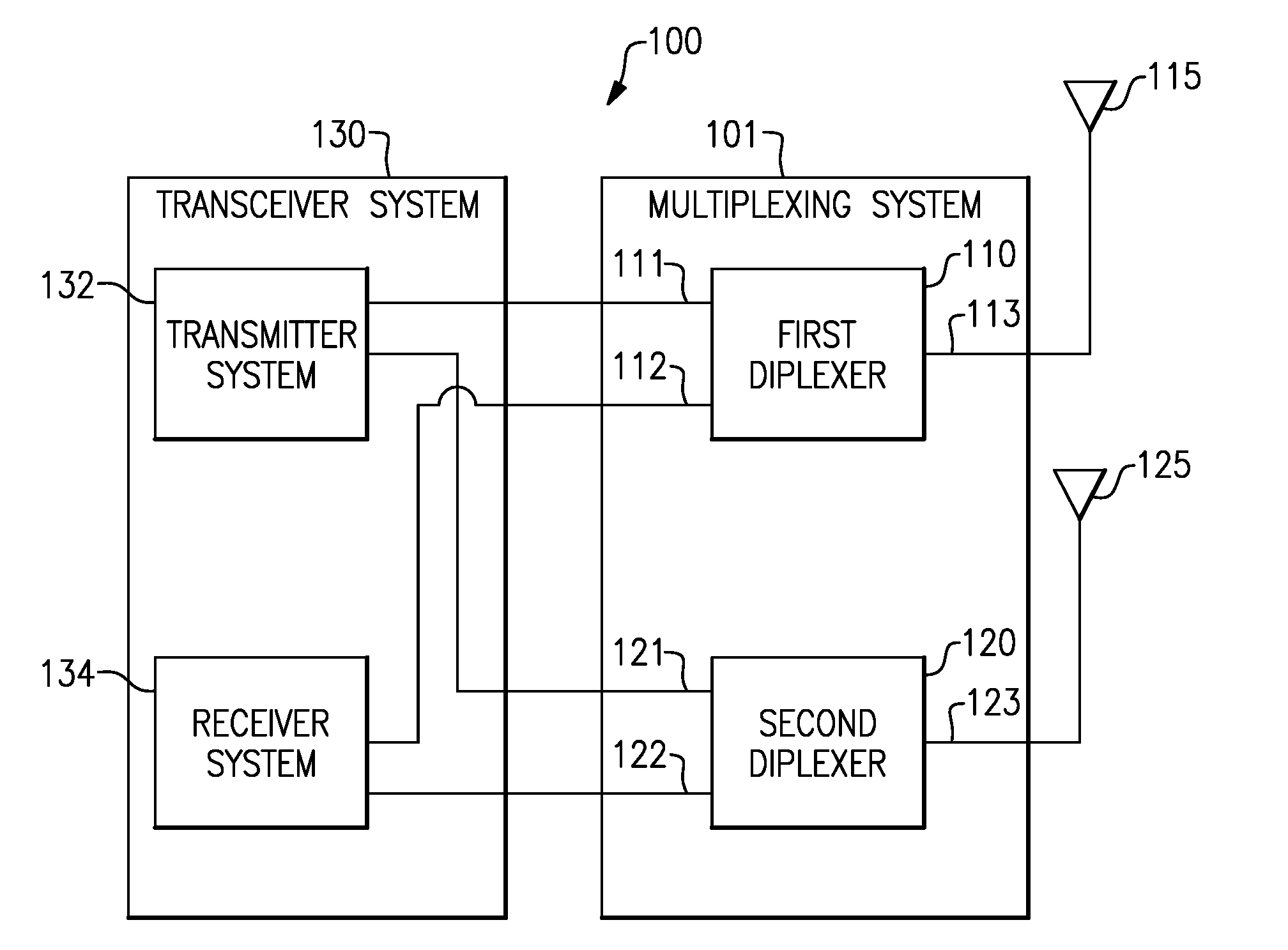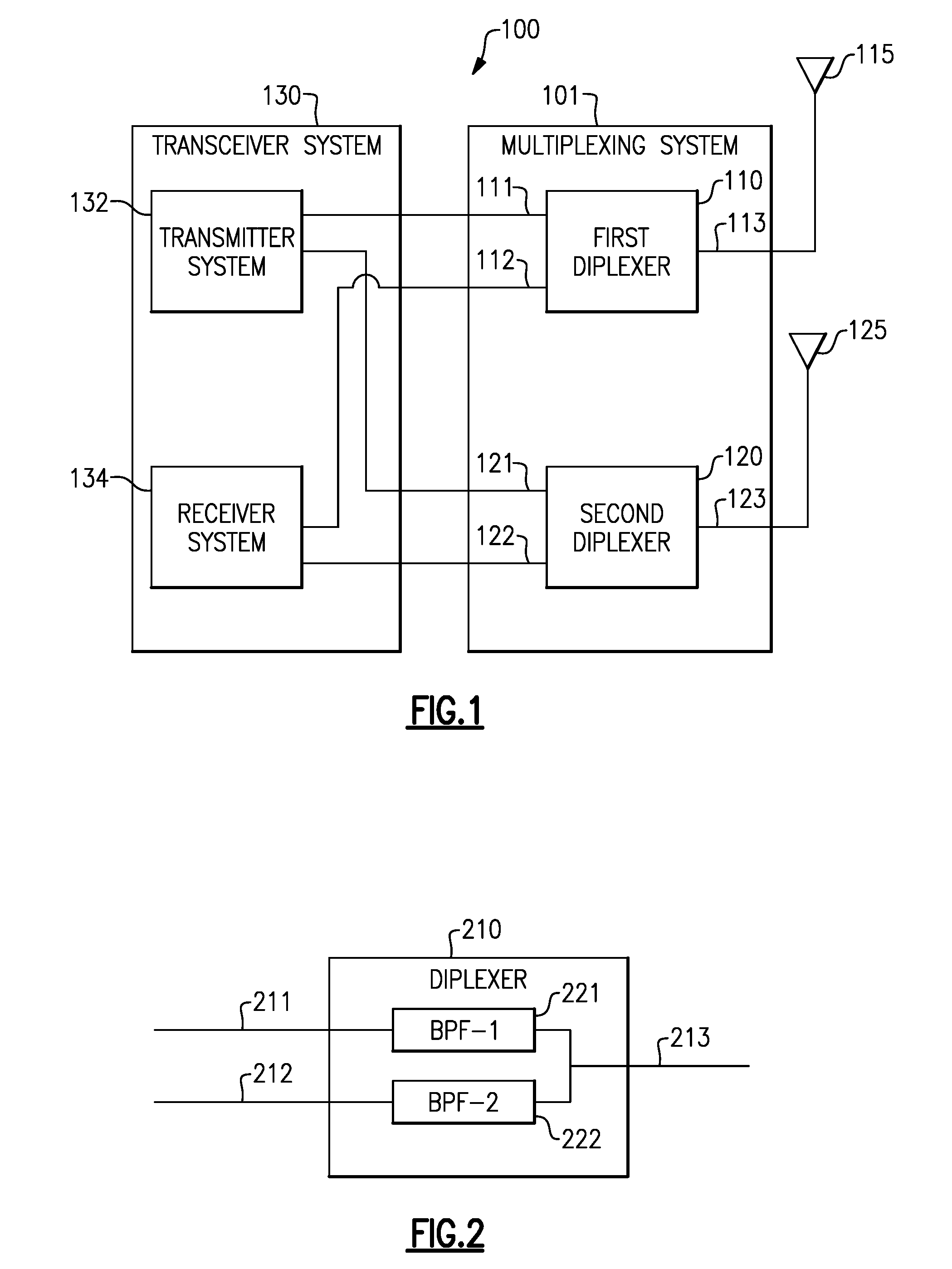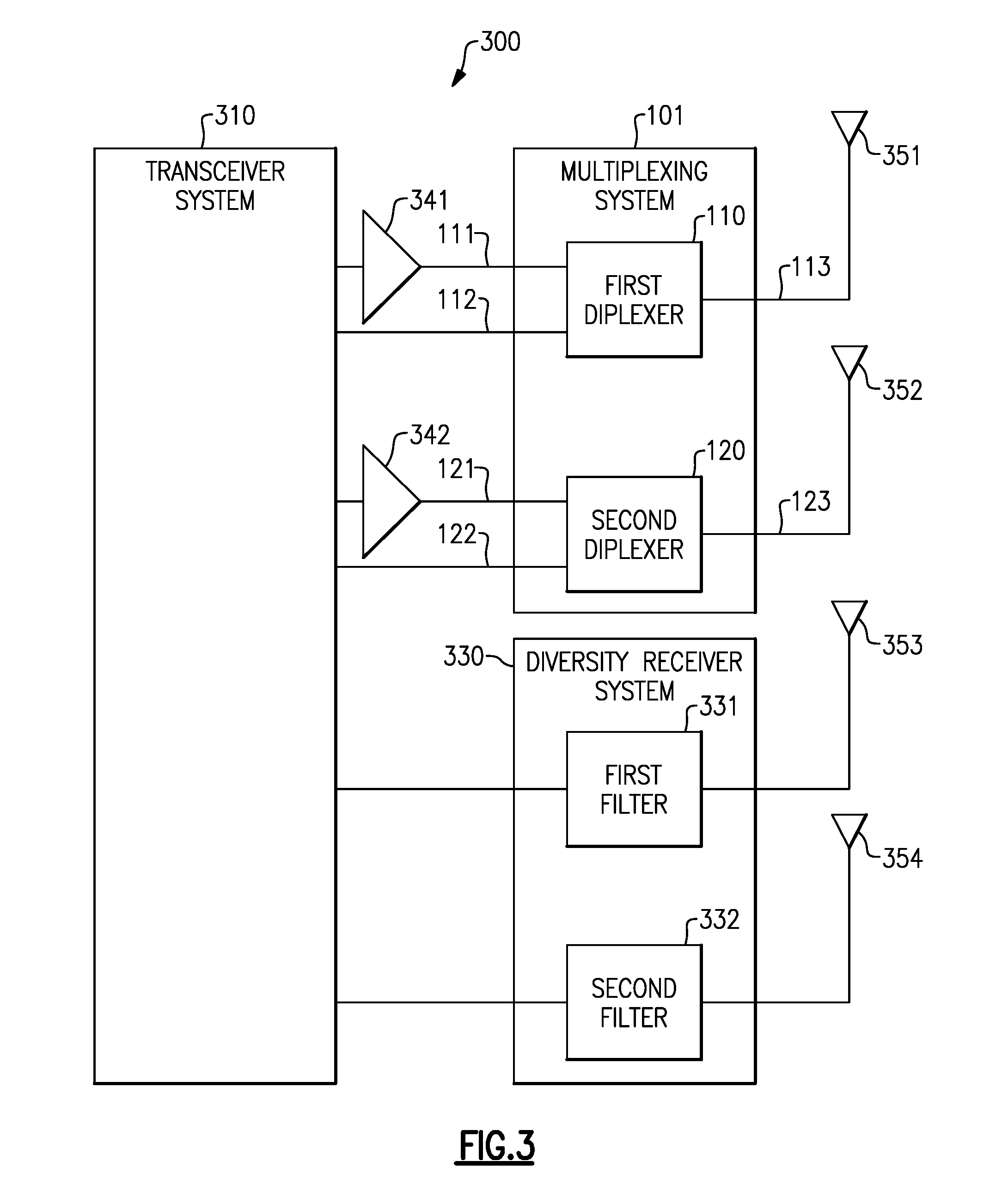Carrier aggregation using diplexers
a carrier aggregation and diplexing technology, applied in the field of carrier aggregation communication multiplexing circuits, can solve the problems of significant loss of duplexer filters, significant cost of such duplexers in terms of component price or power usage,
- Summary
- Abstract
- Description
- Claims
- Application Information
AI Technical Summary
Benefits of technology
Problems solved by technology
Method used
Image
Examples
Embodiment Construction
[0026]The headings provided herein, if any, are for convenience only and do not necessarily affect the scope or meaning of the claimed invention.
[0027]Many wireless devices such as cellular handsets are configured to support multiple cellular frequency bands. In some implementations, a network of duplex filters, each corresponding to a cellular frequency band, is used to allow simultaneous transmission and reception on a common antenna. In some implementations, a switch is used to select a single duplexer to perform single-carrier communication, transmission and reception at a single cellular frequency band. In some implementations, one or more switches are used to select multiple duplexers to perform carrier aggregation communication, transmission and reception at multiple cellular frequency bands simultaneously.
[0028]Duplexer filter loss may be significant as the separation between the uplink sub-band and downlink sub-band is small, e.g., approximately 45 to 400 megahertz (MHz). F...
PUM
 Login to View More
Login to View More Abstract
Description
Claims
Application Information
 Login to View More
Login to View More - R&D
- Intellectual Property
- Life Sciences
- Materials
- Tech Scout
- Unparalleled Data Quality
- Higher Quality Content
- 60% Fewer Hallucinations
Browse by: Latest US Patents, China's latest patents, Technical Efficacy Thesaurus, Application Domain, Technology Topic, Popular Technical Reports.
© 2025 PatSnap. All rights reserved.Legal|Privacy policy|Modern Slavery Act Transparency Statement|Sitemap|About US| Contact US: help@patsnap.com



